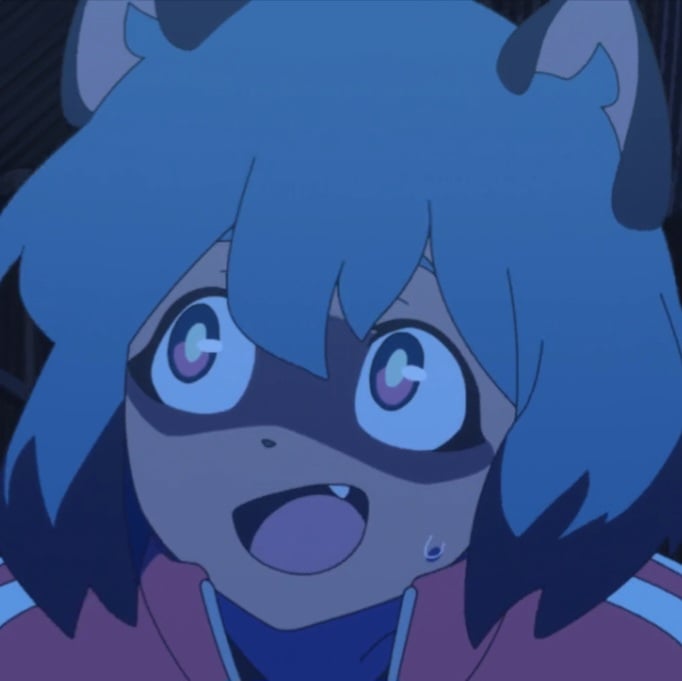This is a follow-up of my previous post.
I’ve also had a few more question about tail furgonomics. Where would the tail go when sleeping or sitting?
I suppose chairs could be built with holes in them for tails to go through, but that would bring a problem especially for animals with larger and thicker tail. When sitting on a bus, for example, animals with larger tail might have their tail be in the way of someone behind them. Or if a chair were located close to a wall, there might not be enough space for larger tails to go through.
And when sleeping, would animals with thicker tail struggle to lay in their bed? Since their tail would get in their way, would they be forced to lay on their side? Would sleeping in a position where your tail is crushed under your body painful?
And what other problems would having a tail bring? It seemed like having a tail as an anthro animal could be a hassle.
But let’s be honest, we view everything about anthro worldbuilding within the lens of a human, because obviously. But an actual anthro society would probably have figured out how to deal and manage with their tail problems the same way we did with our human problems. Their society might not even look like ours, so many problems they would’ve faced in our human society, whether caused by their tail or not, wouldn’t apply. They would probably design their society around the fact that they have tails.
Though a bit of a struggle, we can find products for humans of all shapes and sizes. Shirts, pants, clothings are available of all sizes, even if some sizes are harder to find; left handed scissors exist; and more. So it would be possible for anthros to deal with the hassle of tails. But, it would still be a struggle, just like how much it is a struggle for us to buy shirts with unusual sizing.
But the last two paragraph might not always apply. I am interested in writing a story about a child who suddenly turned into an anthro while others still remain human, so they didn’t have the luxury of anthro-animal-centric societies catering them. Since they were the only anthro, they would have trouble fitting in many ways due to their different, furry body. They had to figure out how to deal with their tail, fur, etc in a society not built for anthro.
With that I wondered, what other struggles would they have? What could potentially be a source of struggle or conflict for an anthro in a society of humans-- aside from discrimination, which would be the main focus of my story. And for more fun, what other adaptations or differences would a society of anthros have over human ones?


I also think of that, too. But one concern would be how large the hole should be. Too small, and anthros with larger tails wouldn’t be able to fit their tail in. As you say, marginalized species would likely struggle with this.
But this problem is even worse for an anthro in a non-anthro/human society like the one in my story. In a human society, most chairs wasn’t designed with tails in mind. Finding a seat with back holes to sit on would be difficult, so in most cases, the anthro would have to sit with their tail crushed by their back. Even sitting in a car would be difficult as there would be nowhere for the tail to go.
I suppose they could sit a bit forward so there would be some gap for their tail. This might not work for anthros with heavier tails or ones that couldn’t bend upwards, in which case they might be able to bend their tail sideways or sit facing sideways. Unfortunately, they won’t lean their back to the chair since there needed to be a gap between their body and the chair for the tail. And for the heavier tails, sitting sideways wouldn’t work with chairs that had armrests and even then it would take more spot on a bench, which could be annoying.
I’ve looked at images of animals sleeping on their back and yup, their tail just lay out between their legs just like in this image.
That could work, but there could probably be some bias or discrimination arising. As some species’ tail were better hidden or tucked away than others, species whose tail were hard to fit or took up more space might be considered “worse”. Like how some people don’t like to sit next to fat people since they take up more space, some anthros might not like to sit behind species whose tail took up more room in the back.
Some anthros might also be more hyperactive than others, which could be a problem when they were on a train and they wagged their tail in front of the people on their back. Imagine how annoying it’d be if the anthro dog sitting in front of you wagged their tail and their furry tail hit your face multiple times.
There would probably be etiquettes surrounding tails, kind of like our etiquettes around when to use our left or right hands. I might delve deeper into it on another Lemmy thread. I have quite a lot to say for a message reply.
There would indeed be a lot of moments where tail, fur, snout, etc became a liability in a world not built around them.
Having you said that in 1st person, though, made me wish I actually had a tail in real life… As much as it’d be a hassle, I’d still love to have one…
This would be difficult for anthros with thicker and less flexible tail, in which case they might just have to deal with their tail.
That seemed interesting. And there would certainly be more weird adaptation present in an anthro society. Species specific teeth cleaning product, for example, as different animals have different teeth structure. A carnivore’s teeth would be different from a herbivore’s. Horns would also have to be managed, so hygiene or care products related to that would be developed.
So far we had been talking about furry species, which was fair, but how about scaly anthros like lizards or amphibians like frogs. Their hygiene needs would be different to animals with fur. Some anthro species might also have other very specific adaptation or hygiene routine, maybe involving extra body parts or body shapes, such as the question of how an anthro hedgehog would clean its spiky body.
Again, there are more things I wanted to talk about, maybe on a separate post in the future.
That wouldn’t seem very fun, would it? Seemed like a hassle given the amount of fur they’d have to clean everyday, all while praying that they didn’t end up smelling worse like a wet dog.
Also, this reply is much longer than I thought. If I continue writing about anthro worldbuilding here, I could’ve ended up writing Lord of the Rings worth of anthro worldbuilding.